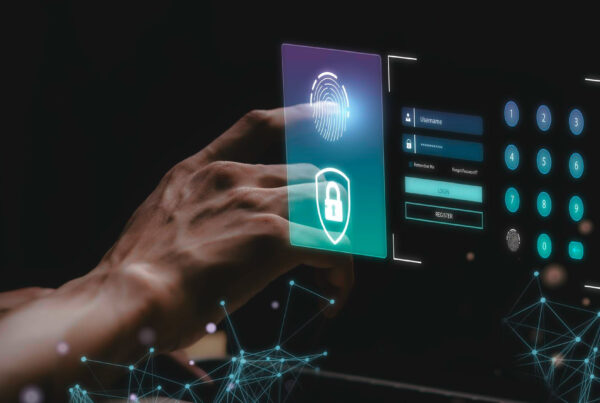Introduction
A digital footprint is an imprint of all our online activities, ranging from the information we willingly give to the less evident elements. Every time we use the keyboard to type, make an online purchase, watch a movie, or post something on social media, our digital footprint expands, and more data accumulates, impacting our privacy, security, and finances. But exactly what is a digital footprint? Simply, it is the information about you that is available online. This includes your name, email id, age, location, and any content you’ve created.
Currently, there are 6 billion Internet users worldwide, This means that around 64% of the population has a unique digital footprint, regardless of the time spent online, apps downloaded, or social media platforms used. Understanding your digital footprint is of the utmost importance since it can impact your reputation in both your personal and professional life. Potential employers or clients, for example, may conduct online research about you before deciding to do business with you.
What is digital footprint?
When you use the internet, you leave a digital footprint behind, which is a sequence of information. A digital footprint can be created in a variety of ways, such as by posting on social media, subscribing to newsletters, leaving an online review, or shopping online.
It is only sometimes evident that you are increasing your digital footprint. Websites can track your activities by installing cookies on your device, and apps can collect your data without your knowledge. Once you permit an organisation access to your information, it may be sold or shared with third parties. Worse, a data breach may have compromised your personal information. According to research, it has been found that an average adult shares 276 Instagram images, 170 Facebook posts, and 141 tweets in a year, sharing their emotions with the world, and leaving their digital footprints behind.
Kinds of Digital Footprint
Digital footprints can be divided into two categories:
- Active Digital footprint:Active digital footprints are data users intentionally leave behind. Because they have knowingly provided information, the user is also aware of the digital trail they have left behind. A social media post or phone call is an illustration of this. They both leave a digital trail that they are aware of.
- Passive Digital footprint:Passive digital footprints are generated from data that a person accidentally leaves behind on the internet. Online activities such as website visits and actions, searches, and online transactions are passive data traces that can be added to a digital footprint. Passive footprints are more challenging to trace and manage because they might be acquired without the user’s knowledge. Footprinting occurs when a hacker obtains data about a targeted system.
Can I Remove My Digital Trace?
The simple answer is no. It’s part of the cost of having access to the internet. Even if you discontinue all internet services, your data remains on profiles with local governments, medical facilities, and other organisations. You may not want to eliminate your footprint completely. A customised profile that highlights your professional accomplishments, for example, can assist you in elevating your reputation.
Data from your digital footprint also fuels more personalised browsing experiences and apps that can assist in monitoring digital health concerns.
How Can I Keep My Digital Footprint Safe?
While you cannot delete your digital trace, you may reduce its size and visibility. You can take steps to protect your digital footprint.
- Maintain proper digital hygiene.
- Change your browser’s settings.
- Keep separate accounts.
- Muddle your online presence.
- Request that your personal information be removed from third-party websites.
Let’s understand these points in detail to get clear to limit your exposure and protect your personal data.
- Maintaining proper digital hygiene: Implementing basic security measures is a quick and easy way to preserveyour digital footprint. The most obvious ones involve employing unique passwords, using two-factor authentication, and avoiding banking on insecure networks like those found in coffee shops and hotels. Consider making your social network account private and restricting the information you share, such as your hometown or other personally identifiable information.
- Change your browser’s settings:Internet browsers have come a long way in terms of giving tools to assist users in protecting their data. However, some search engines, such as Google, Safari, and Firefox, provide more security than others. It’s recommended to go into your browser’s settings and block third-party cookies and eliminate pop-up adverts. It is advised against saving passwords or other personal information such as your address and debit or credit card numbers.
- Keep separate accounts: it’s advisable to keep your personal and professional accounts separate to limit visibility at work and control online perception.
- Muddle your online presence:When you sign up for new accounts or subscriptions, you are usually asked for your name, email address, birthday, and even where you live. In some circumstances, such as health insurance or government paperwork, it is critical that your information is correct. Obscure your digital trace by generating false leads, making it more difficult for hackers to obtain a complete picture of your identity.
- Request that your personal information be removed from third-party websites: Avoid sharing information that the con artist can useagainst you. If you come across such websites Sharing your email, phone number, or any other personal information, you can request to remove it. Finally, leaving a digital trace when using the internet is hard. Even cybersecurity professionals find it challenging to keep out of sight of their personal information, which is likely available for third parties to use. One may not be able to conceal themselves completely, but you can at least leave some false footprints to make it more difficult for companies and hackers to find you.
Conclusion
Finally, it is imperative to keep an eye on our digital footprint in today’s digital world. It is essential to be mindful of what you share, safe and secure, and proactive in monitoring our online presence. By taking the steps discussed above, one can secure themselves both now and in future.
Author : Tanushree Saxena, Trainer, CyberPeace




